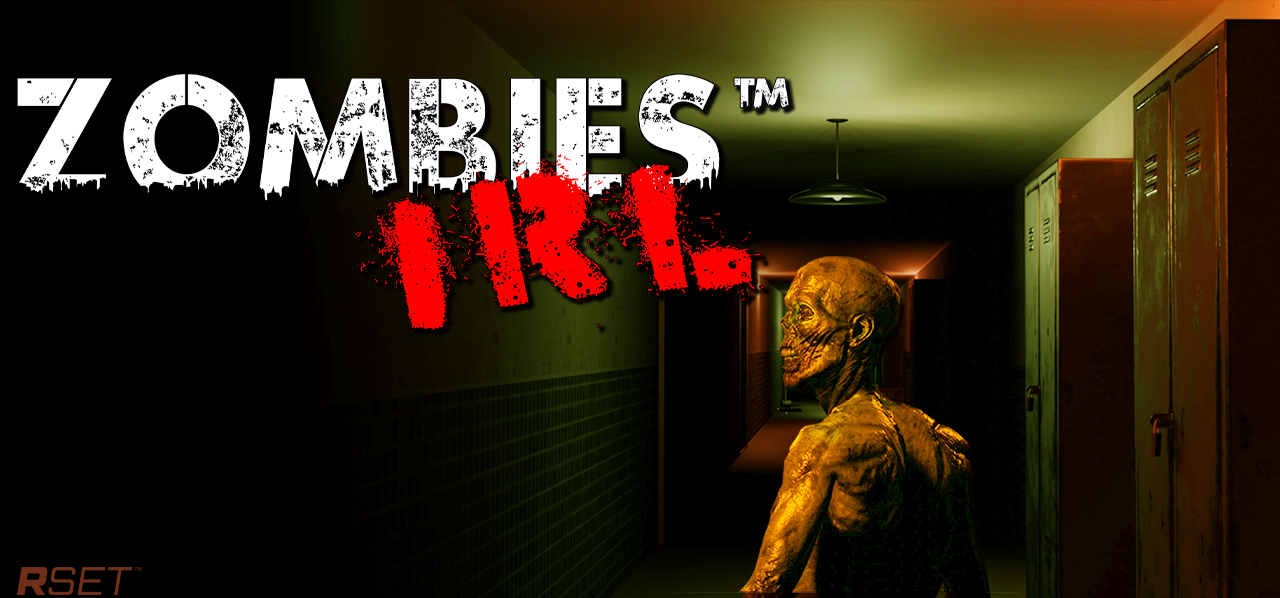While working on RSET, we found ourselves with first person shooter mechanics and simple AI behavior. One day Bill Gregory thought, “I wish I could shoot some zombies in my living room.” so I quickly found some zombie models, dropped them in a scan and Zombies IRL was born.
What started as a fun thing for us to blow off steam at work because something we realized other people wanted to do in their 3D scans so we started talking with the major 3D scanning company, Matterport, and collaborated to make MatterPak Attack where you could load your Matterport scans directly into the game and start playing for free. That received a lot of positive feedback from the Matterport community so we decided we wanted to flesh our little zombie shooter into a full fledged game. Doing that costs money, especially for a company that primarily makes software for the government, so we asked the community to help make this project come to fruition through Kickstarter.
Thinking of a Game as a Product
Graphic I made showing where our money raised from the Kickstarter will be used.
Up until this point, I had been making games as a hobby and not necessarily as a product that can bring revenue to a company. First we had to do market research to make sure Zombies IRL had space to exist in the red ocean of zombie shooter games. We found that we had a market for a game that has an easily accessible way to build levels, but realized that would not be enough for people to want to buy the game. The solution was to provide a platform for the community of players to share their created content as a way of adding longevity and meaning to the game.
We also had many discussions about how much it would cost to acquire and make the assets for the game and carefully considered it into how we priced our pledge tiers and stretch goals. This was an extremely valuable experience that I will take with me into every business meeting here on out.
Creating Atmosphere
Part of every good horror game is creating a spine chilling atmosphere. Dark lighting, blood, and other scary things are hard to achieve, but through discussions with our small team at RSET we were able to agree on a style including the level of detail and poly count of all our assets to create a consistent look.






Gameplay
When discussing how to improve upon the game we decided that a unique take on survival horror crafting would be to do it quickly without messing with complicated inventory systems. We wanted something simple that takes the user 1 second to do so they can get right back into the action. This pushed us to be creative about what items you might find in the locations of our levels and inspired us to make some really cool weapons like the broom-spear and the junk cannon. We also didn’t want crafting items readily available, we wanted the player to have to do something to obtain some components such as find a key to a supply room that has the duct tape and so on. This helped me develop skills in player progression through a level and designing puzzles to keep the player engaged in the repetitive nature of fighting zombies.
Kickstarter Assets
It is essential that Kickstarter pages look professional and have a level of detail that reassures the backers that their money is going to something worthwhile. With advice from Tim Hassebrook of Huntsbrooke Inc. we put a lot of effort into making our Kickstarter page have meaningful information and look as good as possible. This included making special videos and custom titles and graphics to explain the project. With my experience in Photoshop, I was made responsible for making the graphics and I am very please with how they all turned out. Since quick crafting is our core mechanic, our graphics reflect that by looking as if information was written on a piece of blueprint that has gotten bloody from the violence of the zombie apocalypse.



